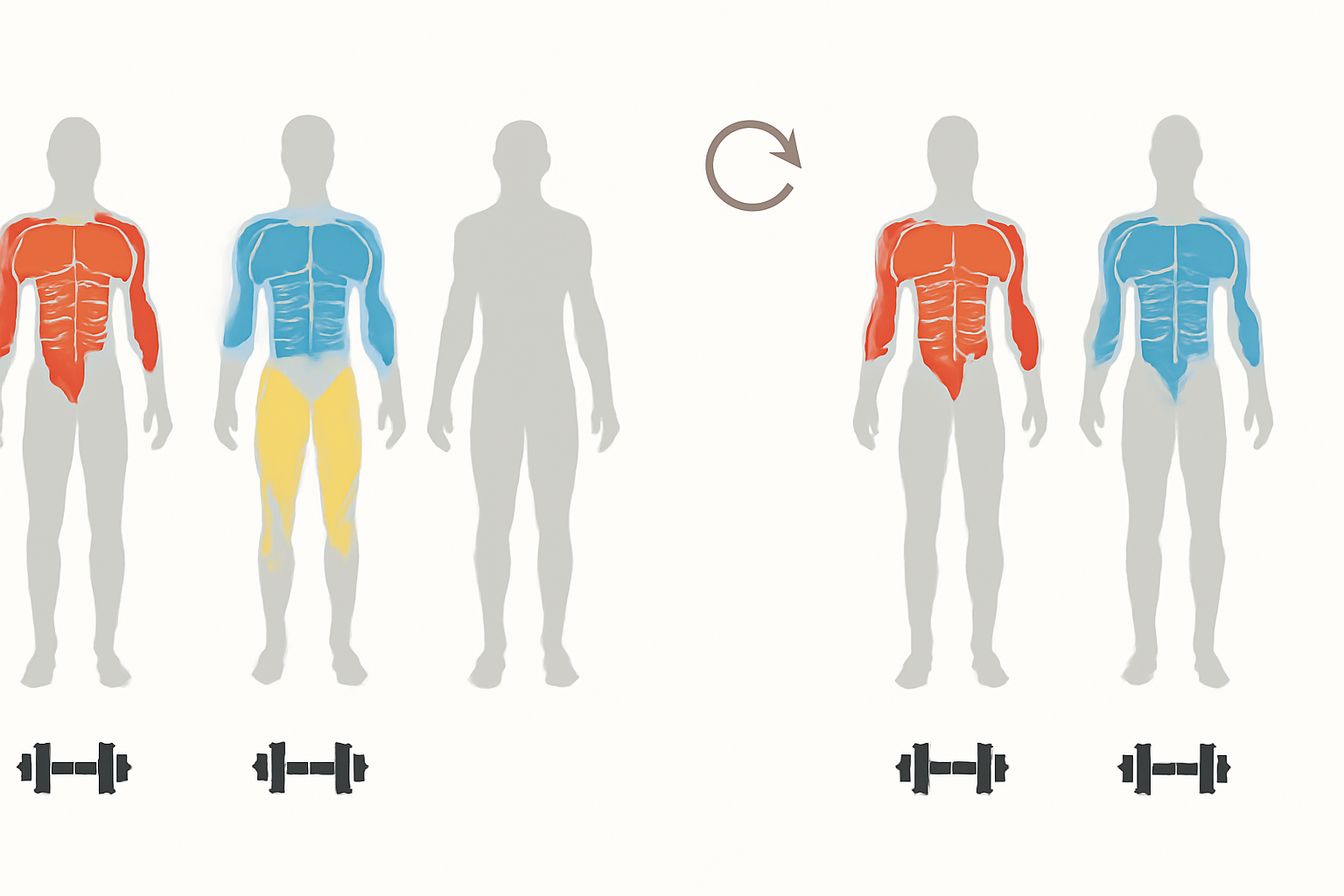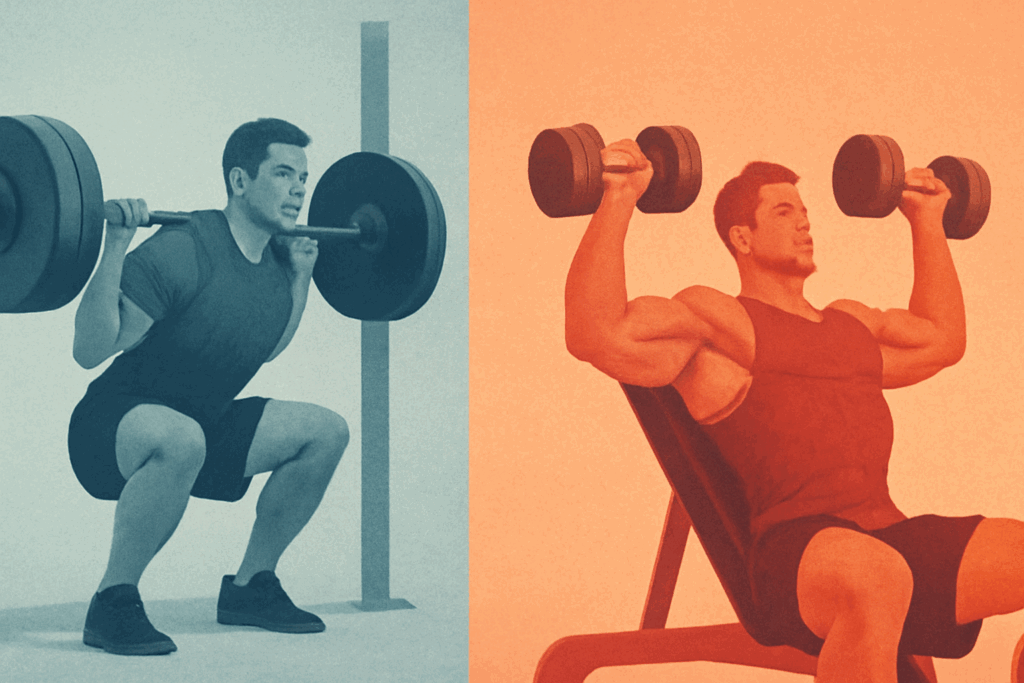Introduction: Unlocking Your Full Potential with a 7 Days Gym Plan
Embarking on a dedicated journey to build muscle is one of the most rewarding and transformative experiences a person can undertake. It demands not only physical discipline but also intellectual engagement and strategic planning. For many fitness enthusiasts, a 7 days gym plan is more than just a weekly schedule of exercise. It represents a methodical and powerful framework to ensure optimal muscle development, strength enhancement, and long-term body composition improvement. With the right balance of intensity, recovery, nutrition, and personalization, such a structured approach can propel your training results to new heights.
The evolution of fitness science has increasingly supported the idea that well-planned workout routines, especially those distributed over a full week, offer superior muscle adaptation responses compared to sporadic or haphazard training. A carefully crafted 7 day workout split aligns physiological recovery cycles with strength progression principles, creating a synergy between effort and results. This model not only fosters muscle hypertrophy but also helps in sustaining motivation, preventing plateaus, and minimizing the risk of injury. Thus, when implemented correctly, a 7 days gym plan becomes a cornerstone of a scientifically sound muscle-building program.
Crucially, muscle growth is not merely a function of lifting weights repeatedly. It involves an intricate interplay between mechanical tension, metabolic stress, nutritional support, hormonal signaling, and adequate rest. Each of these components must be integrated into a 7 day fitness plan that reflects both current fitness levels and long-term goals. Therefore, the efficacy of a weekly fitness plan hinges on its ability to personalize volume, frequency, and intensity while incorporating progressive overload strategies.
In the sections that follow, we will explore seven powerful ways to maximize muscle gains using a 7 day gym workout plan. These insights will be rooted in exercise physiology, backed by scientific research, and enriched with practical application. Each strategy will unravel the complexity behind hypertrophy and guide you through a transformative approach that optimizes every hour spent in the gym.
You may also like: The Ultimate Hypertrophy Workout Program for Building Strength and Size

Optimizing Your 7 Days Gym Plan with Smart Muscle Group Splits
When designing a 7 day workout split, one of the most critical elements is how you divide muscle group focus across the week. This process, known as muscle group splitting, allows targeted hypertrophy while ensuring adequate recovery between sessions. The human body requires sufficient time for muscle repair and protein synthesis following intense resistance training. A smartly designed 7 days gym plan uses this principle to rotate workloads strategically across all major muscle groups.
For example, a classic weekly fitness plan might begin with a push day (chest, shoulders, triceps), followed by a pull day (back, biceps), and then a leg day (quads, hamstrings, calves). This cycle can repeat with a rest day or an active recovery session inserted mid-week. Such structuring ensures that each muscle group receives the right amount of stimulus and recovery window. The key is to balance high-volume sessions with days that allow for neural and tissue regeneration, thereby reducing the risk of overtraining and maximizing muscle gains.
It is also beneficial to consider individual variability when planning your weekly exercise plan. Some individuals may recover faster and can tolerate higher frequency, while others may require extended rest intervals. In this context, listening to your body becomes as important as following the template. A truly effective 7 days gym plan must remain flexible and responsive to both short-term performance indicators and long-term adaptations.
Equally important is the integration of both compound and isolation movements within each muscle group session. Compound lifts such as squats, deadlifts, and bench presses create a systemic anabolic environment by engaging multiple joints and muscle groups. These should be the cornerstone of any 7 day workout plan. However, complementing them with isolation movements allows for focused hypertrophy and symmetrical development. This dual approach contributes not only to size but also to strength, stability, and aesthetics.
Moreover, training splits should reflect the principle of progressive overload. Without systematically increasing the demands placed on muscles, hypertrophy will plateau. This can be achieved through varied rep ranges, increased training volume, enhanced time under tension, and intentional manipulation of rest periods. Whether your goal is mass accumulation, strength augmentation, or improved muscle definition, the foundational structure of your 7 days gym plan must align with scientific training principles and be adjusted periodically to reflect progress.

Fueling Growth: The Role of Nutrition in Your 7 Day Fitness Plan
Even the most meticulously crafted 7 day gym workout plan can fall short if it is not supported by an equally robust nutritional strategy. Muscle building is a metabolically intensive process that requires a consistent supply of high-quality nutrients to support tissue repair, hormone synthesis, and energy production. Without adequate nutrition, the body cannot fully capitalize on the stimulus provided by resistance training, thereby limiting growth potential.
One of the fundamental principles in a weekly fitness plan is achieving a positive energy balance. This means consuming more calories than your body burns, with the surplus directed towards muscle repair and growth. However, the quality of these calories is paramount. Macronutrient distribution should prioritize protein intake, as amino acids are the building blocks of muscle tissue. Research consistently supports a protein intake of 1.6 to 2.2 grams per kilogram of body weight for individuals engaged in intense resistance training. High-quality sources such as lean meats, eggs, dairy, legumes, and whey protein supplements are ideal.
Carbohydrates also play a crucial role in your weekly exercise plan. They replenish glycogen stores, fuel intense training sessions, and stimulate insulin release—a hormone that promotes nutrient uptake into muscle cells. Timing carbohydrate intake around workouts can enhance performance and recovery. Complex carbohydrates from oats, brown rice, sweet potatoes, and whole grains should be emphasized, while simple sugars can be used strategically around training windows for rapid energy.
Fat intake should not be overlooked in a 7 day fitness plan. Dietary fats support hormone production, particularly testosterone, which is vital for muscle growth. Sources such as avocados, nuts, seeds, olive oil, and fatty fish provide essential fatty acids and contribute to overall health. The key is to maintain a balance, aiming for fats to comprise around 20–30% of total caloric intake.
Hydration, micronutrients, and supplementation further enhance your 7 days gym plan. Dehydration can impair performance and recovery, while deficiencies in vitamins and minerals such as magnesium, zinc, vitamin D, and B-complex can hinder anabolic signaling pathways. Strategic supplementation with creatine, beta-alanine, and branched-chain amino acids (BCAAs) can offer marginal but significant performance benefits. Ultimately, integrating these elements into a cohesive nutritional plan ensures that your body has the raw materials it needs to grow stronger each week.

Progressive Overload and Volume Cycling in a 7 Day Workout Plan
At the heart of every effective muscle-building strategy lies the concept of progressive overload. This training principle involves gradually increasing the demands placed on the musculoskeletal system to stimulate continued adaptation. Without progressive overload, even the best 7 days gym plan will reach a plateau, rendering further efforts ineffective. By continuously challenging your body with new stimuli, you ensure that muscle fibers are broken down and rebuilt stronger with each cycle of training.
Implementing progressive overload in a 7 day workout plan requires more than simply adding weight to the bar. It encompasses a variety of training variables, including repetitions, sets, tempo, and rest intervals. One week, you might focus on increasing the number of reps at a given weight, while the next week emphasizes reducing rest periods or enhancing the eccentric phase of a movement. This form of volume cycling not only preserves joint health and prevents burnout but also keeps training sessions engaging and mentally stimulating.
The weekly fitness plan should include periodized phases that alternate between high-volume, moderate-intensity sessions and lower-volume, high-intensity cycles. Such structuring allows different muscle fibers (type I and type II) to be recruited efficiently while mitigating the risk of overuse injuries. For instance, during a hypertrophy-focused phase, you might perform 8–12 reps per set with moderate weights and short rest intervals. In contrast, a strength-focused microcycle may prioritize lower reps (3–6) with heavier weights and longer recovery between sets.
Tracking your performance across these weekly exercise plans is essential to ensure that progress is measurable and consistent. Keeping a detailed training log can help you identify plateaus, recognize when to deload, and maintain motivation. This approach also enables auto-regulation, where training intensity is adjusted in real-time based on perceived exertion and recovery status. Auto-regulation ensures that the 7 day workout split remains responsive to your body’s needs while still adhering to the principle of progressive overload.
Lastly, remember that adaptation does not occur in a vacuum. The effectiveness of overload depends on adequate recovery and nutrition. If sleep quality, stress management, and nutrient intake are neglected, the anabolic response to training will be blunted. Thus, progressive overload should be implemented as part of an integrated 7 days gym plan that respects the interconnected nature of human physiology and performance.
Frequently Asked Questions (FAQ) on Maximizing Muscle Gains with a 7 Days Gym Plan
1. How Can I Adapt My 7 Days Gym Plan for Maximum Muscle Growth?
The key to maximizing muscle growth with your 7 days gym plan lies in progressive overload and proper recovery. Gradually increasing the intensity of your workouts while allowing adequate rest is crucial. One practical way to adapt your 7 day gym workout plan is by manipulating variables like sets, reps, and rest periods. For example, you can start with moderate intensity and progressively increase weight or reduce rest time. Additionally, alternating between different phases of training (such as strength and hypertrophy) can prevent plateaus and stimulate continuous growth. Understanding your body’s recovery needs also plays a significant role in ensuring you don’t overtrain, which is crucial for optimal muscle adaptation.
2. What Are the Benefits of Using a 7 Day Workout Split?
A 7 day workout split is highly effective in providing focused muscle recovery while ensuring consistent training stimulus. Unlike a traditional full-body workout, a split plan allows you to target specific muscle groups on different days, reducing the risk of fatigue and overtraining. It provides a balanced approach that not only boosts muscle hypertrophy but also improves strength. The split schedule enables you to work on multiple aspects of fitness, such as power, endurance, and flexibility, while also incorporating rest days strategically. This setup makes the most of each workout, ensuring that every muscle group gets the required intensity and time to recover before its next workout.

3. How Do I Structure My Weekly Exercise Plan for Full Body Growth?
When structuring your weekly exercise plan, it’s important to balance compound and isolation exercises. Compound movements, such as squats, deadlifts, and bench presses, should form the foundation of your 7 day workout plan. These exercises work multiple muscle groups, providing the most efficient stimulus for muscle growth. In addition to compound lifts, include isolation exercises for specific muscle groups that need extra attention. For example, include bicep curls for arms or calf raises for lower legs. Also, varying your rep ranges (e.g., lower reps for strength, higher reps for hypertrophy) ensures a well-rounded approach to muscle development.
4. What Role Does Nutrition Play in a 7 Days Gym Plan?
Nutrition is the cornerstone of any successful 7 days gym plan. Muscle growth occurs when your body has access to sufficient calories and nutrients to repair and build muscle fibers. A well-structured diet should prioritize protein intake, as it provides the amino acids needed for muscle repair and growth. Carbohydrates are also essential for energy during workouts, while healthy fats support hormone production, particularly testosterone, which is crucial for muscle growth. The timing of your meals is just as important as the quality. Consuming protein-rich meals throughout the day, with special emphasis on pre- and post-workout nutrition, helps maximize recovery and fuel muscle synthesis.
5. How Can I Maintain Motivation for a 7 Day Workout Plan Over the Long Term?
Staying motivated over the long term with a 7 day fitness plan can be challenging, but setting clear goals and tracking progress are great ways to maintain momentum. Small victories, such as adding weight to an exercise or improving your endurance, serve as powerful motivators. Furthermore, varying your workouts and making the routine enjoyable will prevent burnout. Having a training partner or joining fitness communities can also provide support and encouragement. Remember, the key is consistency, and once you build the habit, following a weekly exercise plan becomes easier and more rewarding.

6. What Are the Best Rest and Recovery Techniques for a 7 Day Gym Workout Plan?
Incorporating adequate rest into your 7 days gym plan is just as important as the workout itself. Your muscles grow when you are at rest, not during the actual training. Rest days allow your muscles to repair, which is essential for long-term muscle gain. Active recovery techniques such as yoga, stretching, or low-intensity walking can help maintain mobility and reduce muscle soreness. Additionally, make sure to get quality sleep, as it plays a significant role in muscle recovery. If needed, consider implementing a deload week every few months, where you reduce training volume to allow for deeper recovery.

7. Can I Customize a 7 Day Gym Plan Based on My Goals (Strength vs. Hypertrophy)?
Yes, your 7 day gym workout plan can and should be customized based on your specific goals. If your goal is strength, focus on low reps (3-6) with heavier weights, and incorporate exercises that target maximal strength development, such as squats, deadlifts, and bench presses. On the other hand, if hypertrophy (muscle growth) is your main goal, a higher rep range (8-12) with moderate weights and shorter rest periods between sets is optimal. You can structure the 7 day workout plan to alternate between strength-focused and hypertrophy-focused days, ensuring that both muscle size and strength are addressed simultaneously.
8. How Can I Adjust My 7 Days Gym Plan to Avoid Plateaus?
To prevent hitting a plateau in your 7 day workout plan, regularly change variables in your routine. This can include altering the rep range, switching exercises, changing your workout split, or introducing techniques such as supersets, drop sets, or rest-pause sets. Additionally, you can periodically cycle through periods of high volume and low volume training to keep your muscles guessing. It’s also important to listen to your body and incorporate deloading periods when necessary. Lastly, increasing the frequency or intensity of your workouts over time will help keep progress moving forward.
9. What Are Some Advanced Techniques to Include in a 7 Day Workout Split?
For those who have been lifting for some time and are looking to take their weekly fitness plan to the next level, incorporating advanced training techniques can help break through plateaus and accelerate muscle gains. Techniques such as pyramid sets, negative reps, forced reps, and time under tension can push your muscles beyond their normal limits. Additionally, periodizing your 7 day workout split to include phases focusing on strength, hypertrophy, and endurance is a powerful way to continuously evolve your routine. You might also experiment with high-intensity interval training (HIIT) on rest days to boost fat loss without sacrificing muscle mass.
10. How Do I Know If My 7 Day Fitness Plan Is Effective?
The effectiveness of your 7 day fitness plan can be gauged by tracking several key indicators of progress. This includes improvements in strength (e.g., the amount of weight lifted), muscle size (measured through circumference or body composition changes), endurance, and overall performance. Regularly assessing these metrics can provide a clear picture of whether your routine is helping you meet your goals. Additionally, paying attention to your recovery and how you feel both during and after workouts will tell you if the plan is too taxing or needs adjustment. Don’t forget that visible results will take time, but consistency, intensity, and adequate nutrition will ensure that progress is made.
Conclusion: The Synergy of Science, Strategy, and Consistency in a 7 Days Gym Plan
Building muscle is a complex process that requires a combination of structured planning, effort, and consistency. A 7 days gym plan offers the perfect framework to achieve maximum muscle gains, as long as it incorporates smart muscle group splits, progressive overload, adequate recovery, and proper nutrition. By utilizing these seven powerful strategies, you can optimize each aspect of your training while minimizing the risks of stagnation and injury.
The true key to success lies not in rigid adherence to one-size-fits-all templates but in personalizing your 7 day workout plan to meet your unique goals and needs. Whether you’re looking to increase strength, build mass, or improve muscle definition, the flexibility to adjust intensity, volume, and recovery is essential for continued progress. And most importantly, remember that your commitment to the plan—backed by sound nutritional choices, recovery strategies, and tracking mechanisms—will determine the extent of your muscle-building success.
So, take your 7 day fitness plan seriously, listen to your body, and stay consistent. Your muscles will respond, your strength will grow, and the results will speak for themselves.
Further Reading:
Split Training: 7-Day Gym Workout Plan





